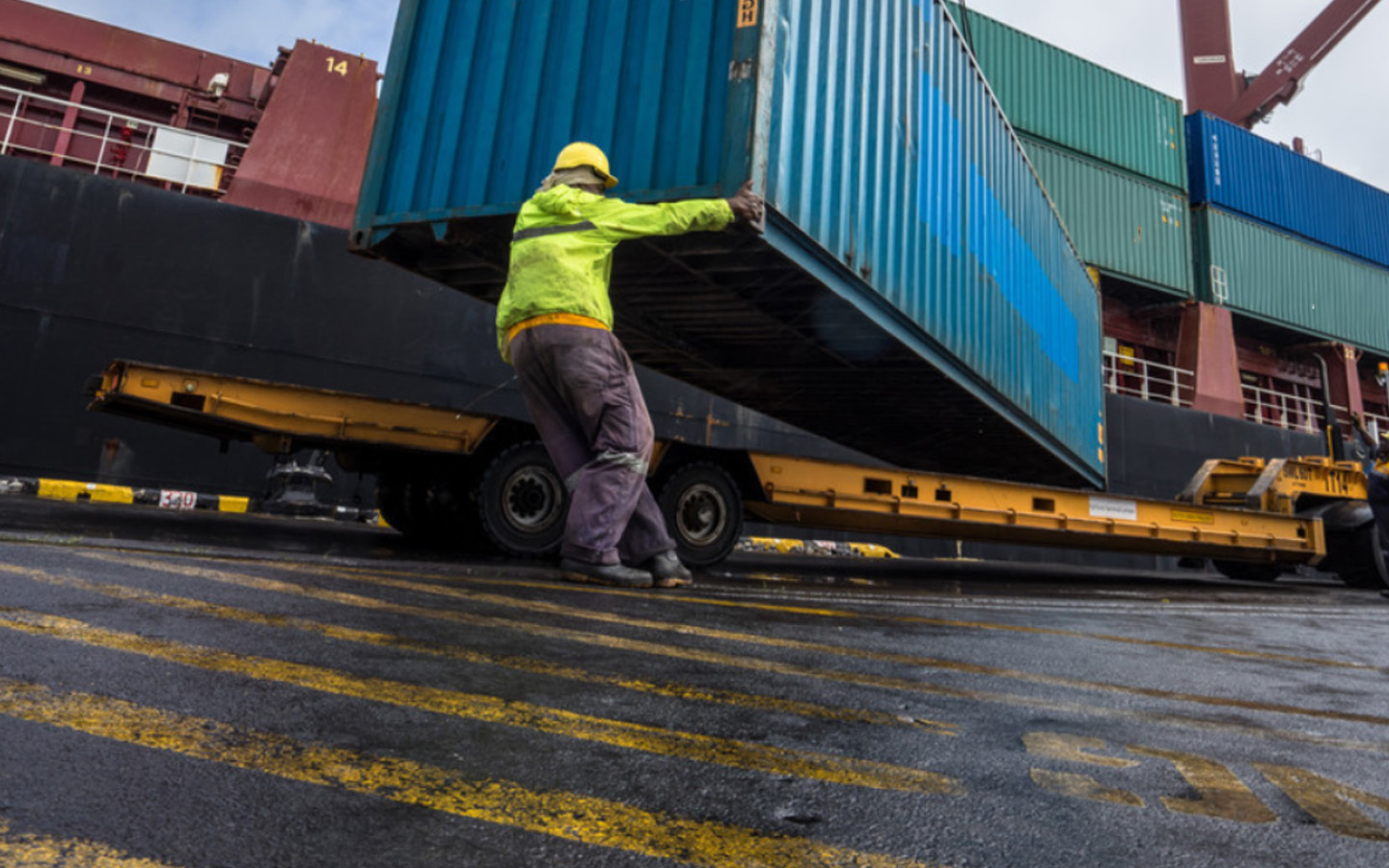Driving Economic Growth with Better Business Environment
Structural reform inroads help advance trade, which drives economic growth and recovery. To emerge stronger from the COVID-19 pandemic, Indonesia is working with ADB and financing partners from Japan and the Republic of Korea on a competitive and investment-friendly business environment to achieve faster, more inclusive, and sustainable economic growth.
Impeded Economic Growth
In 2020, Indonesia was classified as an upper-middle-income country, with a per capita gross national income reaching $4,050 in 2019. However, the unprecedented impact of COVID-19 caused the economy to contract in 2020, by 2.1%, for the first time since the Asian financial crisis. As a result, poverty and unemployment rose by 1% and 1.8%, respectively, compared to 2019.
For Indonesia to achieve high-income country status by 2045 and keep an accelerated economic recovery from the pandemic, a growth rate of about 7% per annum will be necessary.
Indonesia aspires to become a high-income country. The government has set a target of becoming one and transforming its economy into the fifth-largest globally by 2045. Indonesia’s abundant natural resource endowment, demographic dividend, and sizable domestic market provide the foundation to attain this goal. However, this will require more than the country’s current growth momentum.
Following the Asian financial crisis in 1998 and until 2019, the economy grew at an average annual rate of 5%, which is insufficient to support its long-term aspiration. For Indonesia to achieve high-income country status by 2045 and keep an accelerated economic recovery from the pandemic, a growth rate of about 7% per annum will be necessary. Private investment is concentrated in the resources sector and digital economy, with limited impact on job creation.
Indonesia’s sources of growth are also narrow. Because the export of primary commodities has primarily driven economic expansion, sources of economic growth have been narrowing and becoming more volatile. This exposes the economy to deteriorating terms of trade and, in turn, places balance-of-payments constraints on growth. Moreover, only a few manufacturing firms in Indonesia have grown to a size sufficient to drive productivity gains, including labor productivity and innovation.
Without structural reform, a faster growth rate will be difficult as Indonesia’s potential growth rate, when all resources are fully employed, has declined from 9.50% in 1995–1996 to 5.34% in 2017.
Many issues afflict the country’s investment environment and private sector development. For example, an outdated approach to business licensing and difficulties setting up operations discourage foreign direct investment (FDI) in job-creating sectors such as manufacturing. Another is transport and logistics constraints.
Strategic Approach to Attracting Business
Aligning with Indonesia’s National Medium-term Development Plan 2020–2024, ADB and financing partners Export-Import Bank of Korea and Japan International Cooperation Agency approved the Competitiveness, Industrial Modernization, and Trade Acceleration Program, Subprogram 1. The program aims to foster a more competitive and investment-friendly business environment in Indonesia and to support an accelerated economic recovery from the COVID-19 pandemic. It combines policy-based loans with technical assistance and knowledge work to support government reforms.
Three subprograms will focus on creating an enabling environment for investments, easing barriers to trade, and growing enterprises.
The subprograms are interlinked and seek to deepen and widen the reforms. The policy actions under subprogram 1 provide the first steps of reform with effective implementation under subprogram 2, followed by an evaluation of the policy actions for improvement under subprogram 3.
Financing partners are supporting Indonesia to foster a more competitive and investment-friendly business environment to support economic growth.
The first reform area seeks to improve the enabling environments for investments. This involves streamlining the process of starting a business across national and subnational levels, attracting foreign direct investment in manufacturing, simplifying land-related transactions for investors, and enhancing the attractiveness of special economic zones.
The second area of reform is to ease barriers to trade, such as reducing the cost of moving goods across borders, connecting logistics services, and facilitating trade.
The third reform area is to grow and upscale enterprises, removing impediments to business growth, especially for micro, small, and medium-sized enterprises (MSMEs). An example of how this is done is to provide small businesses a preferential space in transport terminals and ports to set up businesses and fast-track their brand applications.
Easier, Smoother Businesses Behind the Border
The program aims for a resilient economy with reduced disparities between the country’s regions, which aligns with the Vision of Indonesia 2045. The country needs to improve its trade competitiveness to achieve this.
The program will help Indonesia establish integrated multimodal goods transport and border clearance (customs, immigration, and quarantine). The program supports the government’s reform of the logistic ecosystem, which is expected to contribute to reducing logistics costs from 23.9% of GDP in 2019 to 20% by 2025. The program will also help Indonesia increase its manufacturing exports from $115.7 billion (in 2019) to $183.4 billion (in 2026). In addition, the program will support the expansion of outputs for MSMEs to 65% of GDP (from 57% of GDP in 2019) and establish an integrated data system to improve interministerial policy coordination and targeting for MSMEs. The program will also help reduce restrictions on FDI, which is expected to increase annual FDI.
Project Details
Indonesia: Competitiveness, Industrial Modernization, and Trade Acceleration Program, Subprogram 1
Cost
$826.6 million
- ADB Resources $500 million
Cofinancing Partners
- Export-Import Bank of Korea (Loan) $100 million
- Japan International Cooperation Agency (Loan) $226.6 million
Dates
Approval Date 29 October 2021
Signing Date 15 December 2021
Completion Date 31 December 2022


